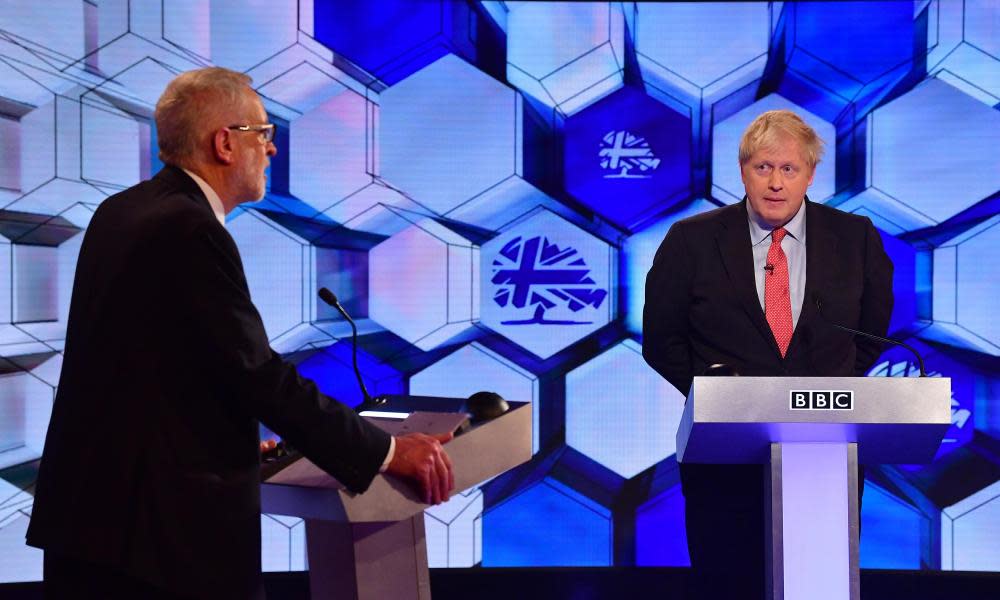As in 2017, Labour is rising in polls as election nears – but not by enough

With days to go before the election, there is little sign recent campaigning has had any dramatic impact. A crop of five weekend polls put the Conservatives 11 points ahead, a widening of the Tory lead by about one point, compared with rolling averages.
Boris Johnson’s party’s poll rating levelled out at about 42%-43% a fortnight ago, but that is easily enough for a majority if Labour does not close the gap. Overall, it would not be a much better national vote share than the 42.34% secured by Theresa May in 2017, but the question this time is how the votes are distributed.
Labour has improved over the past fortnight to about 33%, but it is not obvious that Jeremy Corbyn’s party is doing enough to force a hung parliament. Those who like to reflect on the experience of 2017, where the party staged an impressive late comeback, should look at the average polling graphs compared.
The graph tells a clear story: Labour is consistently increasing in a way that mirrors 2017 – but at each equivalent stage, Corbyn’s party is a few points behind this time around, and if anything, the gap is slightly widening.
As for the weekend polls, the bulk of the fieldwork for the five surveys was conducted between Wednesday and Friday – after Donald Trump’s relatively low-key visit, during which he did not say the NHS would be “on the table” in trade talks, and at a time when further complaints about antisemitism among some Labour members were made by party staffers.
Only one of the five surveys from Deltapoll conducted any fieldwork on Saturday, after the head-to-head debate on the BBC on Friday night, in which Corbyn gave a serious, considered performance and tried to call out his rival for “racist remarks” in his past writings.
Watch the pre-election polls to see if the TV debate has made any difference. It might: interestingly, according to Ipsos Mori, Corbyn’s low personal ratings have improved from -60 to -44 since November, while Johnson’s have slumped from +2 to -20. The sum is those who are satisfied with their performance as leader minus those who are not.
The big difference with 2017 is the improved relative performance of the Liberal Democrats. Jo Swinson’s party has been squeezed since her appearance on Question Time on 22 November, but even with an average of 12%-13%, the party is five points ahead of where it finished at the previous election, helped by the Lib Dem anti-Brexit stance and worries in some progressive voters’ minds about antisemitism.
Related: Election polls UK 2019: Tories maintain lead over Labour as campaign enters final days
What may hurt the Conservatives is tactical voting. Some recent seat-by-seat polling is suggesting the Lib Dems could take pro-remain seats from the Conservatives where Labour cannot, most notably Guildford – opening up the possibility of more Tory losses in London and the south-east than anticipated.
But that may not mean much if the Conservative vote continues to hold up in Scotland, and Johnson’s party can gain at least the dozen seats where Labour has a majority of less than 2,000 votes, and that voted 55% or more for leave. Another recent constituency poll has the Conservatives taking Wrexham, the seat with the largest majority of those dozen, by a landslide.
This close to an election, it is prudent to be wary of polling. But unless something dramatic occurs, Boris Johnson is heading to Downing Street with an overall majority.

 Yahoo News
Yahoo News 
